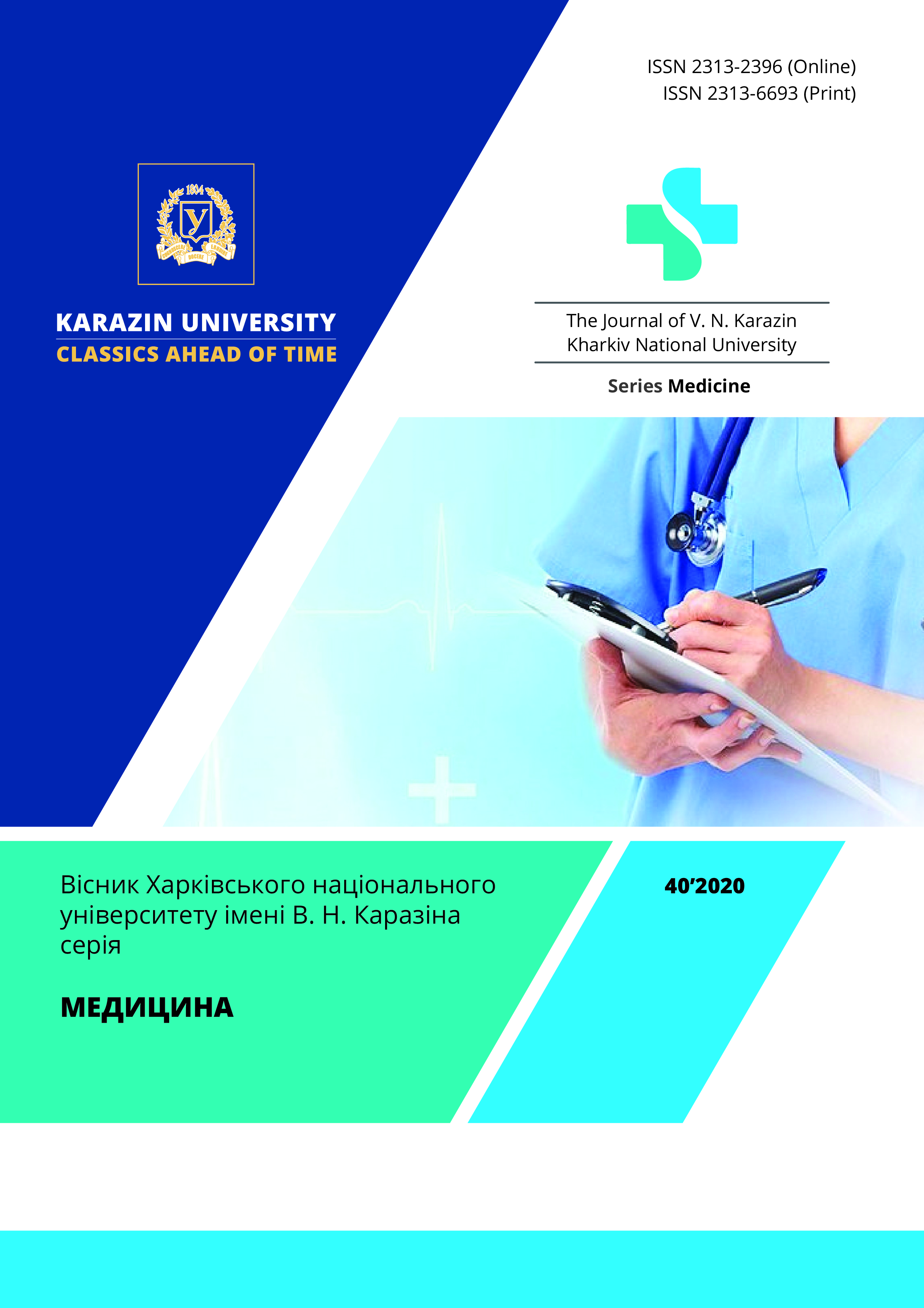Indicators of oxygen transport in acute and early periods of traumatic disease with multistage surgical correction at polytrauma
Abstract
Disorders of the oxygen transport play an important role in the development of multiple organ disfunction syndrome and are a marker of tissue hypoxia and ischemia. Disorders of the oxygen transport could be use for predicting patient survival and as criteria for the severity of the pathological process. The aim of this study was to explore the indicators of systemic oxygen transport in the perioperative period in patients with traumatic deases in multi-stage surgical correction at polytrauma in terms of standard and advanced intensive care. Materials and methods. A prospective study of 88 patients with traumatic deases was conducted. The dynamics of indices of oxygen delivery (iDО2) and oxygen consumption (iVO2), oxygen extraction coefficient (KEO2) at different variants of intensive care was studied. Results. The patients in both groups was noted iDO2 decline, which was due to massive blood loss and decreased cardiac output on admission to the operation room. Despite the fact that during the acute period was held stop bleeding, correction of hypovolemia and posthemorrhagic anemia, the average level of iDО2 was quite low. iDO2 was multidirectional nature of the changes in the studied groups at the second and third stages of the study. In turn, the average values KEO2 characterized the degree of tension compensatory mechanisms and metabolic changes caused by hypoxia and hypoperfusion. Normalization of oxygen homeostasis parameters was achieved in the fourth stage of the study. Conclusions. The maximal intensity of development of compensatory mechanisms and changes of oxygen transport occurs within the first 5 days after the injury. The optimized intensive care which has been used in the treatment patients of Group II, has positive effect on the ability to potentiate adaptive defense mechanisms and reduce oxygen debt.
Downloads
References
Aghajanyan VV. Septic complications in polytrauma. Polytrauma. 2006; 1: 5–17.
Shchekolova NB, Ladeyshikov VM, Zubarev NS. Complications of the early period of traumatic disease with multiple injuries of the musculoskeletal system. Perm. med. journal. 2016; 23 (3): 25–30.
Shapkin Yug, Seliverstov PA. The phenomenon of mutual aggravation of injuries in polytrauma. Perm. med. journal. 2016; 23 (5): 82–94.
Molaie AM, Maguire J. Neuroendocrine Abnormalities Following Traumatic Brain Injury: An Important Contributor to Neuropsychiatric Sequelae. Front. Endocrinol. 2018; 9: 176. https://doi.org/10.3389/fendo.2018.00176
Khubutia MSh, Shabanov AK, Chernenkaya TV, Godkov MA, Dorfman AG. Infectious pulmonary complications in the intensive care unit at victims with combined trauma. General resuscitation. 2011; 7, (4): 24–27.
Bedreag OH, Papurica M, Rogobete AF, Sarandan M, Cradigati CA, Vernic C, Dumbuleu CM, Nartita R, Sandesc D. New perspectives of volemic resuscitation in polytrauma patients: a review. Burns & Trauma. 2016; 4:1; 1–7. https://doi.org/10.1186/s41038-016-0029-9
Munoz C, Aletti F, Govender K, Cabrales P and Kistler EB. Resuscitation After Hemorrhagic Shock in the Microcirculation: Targeting Optimal Oxygen Delivery in the Design of Artificial Blood Substitutes. Front. Med.2020; 7:585638. https://doi.org/10.3389/fmed.2020.585638
Lei Kuang, Yu Zhu, Jie Zhang, Yue Wu, Kunlun Tian, Xiangyun Chen, Mingying Xue, Fei Chuen Tzang, Billi Lau, Bing Lou Wong, Liangming Liu & Tao Li. A novel cross-linked haemoglobin-based oxygen carrier is beneficial to sepsis in rats, Artificial Cells, Nanomedicine, and Biotechnology. 2019; 47:1;1496–1504. https://doi.org/10.1080/21691401.2019.1602049
Pereira AJ, Silva E. Tissue Response to Different Hypoxic Injuries and Its Clinical Relevance. In: Pinto Lima A, Silva E. (eds) Monitoring Tissue Perfusion in ShockSpringer, Cham. 2018; 35–48. https://doi.org/10.1007/978-3-319-43130-7_4
Kuzkov VV, Kirov MJ. Invasive monitoring of hemodynamics in intensive care and anesthesiology: monograph. Arkhangelsk: North. state med. univer. 2015.392 p.
Matvieienko M, Baranova N, Boiko O, Sukesh A. Features of the Functional State of Red Blood Cells During Hypoxia in Patients with Polytrauma. World Science. 2020; 2 (6 (58)): 38–44. https://doi.org/10.31435/rsglobal_ws/30062020/7111
Ryabov GA. Hypoxia of critical conditions. Moscow: Medicine; 1988. 287 p.
The Journal of V. N. Karazin Kharkiv National University, series Medicine has following copyright terms:
- Authors retain copyright and grant the journal right of first publication with the work simultaneously licensed under a Creative Commons Attribution License that allows others to share the work with an acknowledgement of the work’s authorship and initial publication in this journal.
- Authors are able to enter into separate, additional contractual arrangements for the non-exclusive distribution of the journal’s published version of the work, with an acknowledgement of its initial publication in this journal.
- Authors are permitted and encouraged to post their work online prior to and during the submission process, as it can lead to productive exchanges, as well as earlier and greater citation of published work.




